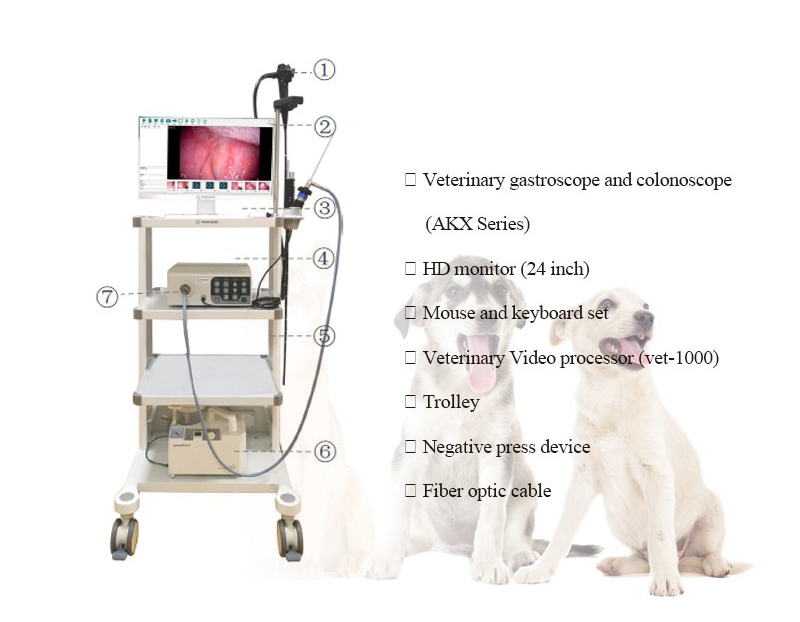Endoscope technology has the advantages of less trauma, light pain, quick recovery and little impact on appearance. With the improvement of animal medical treatment, the application of endoscope in the diagnosis and treatment of small animals is gradually increasing. Veterinary endoscope is used in canine diseases. The clinical applications mainly include gastrointestinal endoscopy and laparoscopy.
The common upper gastrointestinal endoscopy and lower gastrointestinal endoscopy are commonly used in gastrointestinal endoscopy. Upper gastrointestinal endoscopy is divided into gastroscope and duodenoscope. Gastroscope can examine the esophagus, stomach and upper duodenum through gastroscope. Food inspections evaluate the sensitivity of animals to food; duodenoscopy mainly inspects and treats biliary and pancreatic diseases. Lower gastrointestinal endoscopy can examine the rectum, sigmoid colon to the end of the ileum. Colonoscopy is mainly used when dogs and cats have chronic diseases of the large intestine or rectum, while ileoscopy is used in animals with typical large intestine or small intestine diseases. Time.
Gastrointestinal endoscopy can be used to check the mucosal biopsy, magnify, stain, etc. under the microscope to confirm the diagnosis of the disease. It can also perform some microscopic treatments through biopsy, such as hemostasis, injection of sclerosing agent, glue, foreign body removal, Cutting treatment of gastric stones, microscopic resection of benign and malignant tumors, gastrointestinal stenosis and dilation, placing stents, laser cutting tumors and stenosis, injection of botulinum toxin to treat cardiac achalasia, microscopic suture ligation to treat esophageal hiatus hernia, microscopic twelve Numerous treatments include papillary incision, stone removal, lithotripsy, bile duct drainage, and stent placement.
Laparoscopy is mainly used for sterilization, ovarian hysterectomy, cryptorchidectomy, gastric and bladder fixation in the clinical diagnosis and treatment of dogs, cats and small animals.
Other endoscopes include rhinoscope, laryngoscopy, bronchoscope, otoscope, arthroscope, cystoscope, etc. Among them, rhinoscopy, pharyngoscopy, laryngoscopy, etc. are helpful in diagnosing the upper respiratory tract dysfunction of the animal, and the operation is simple, so that the animal is free from the pain of the incision; the bronchoscopy method can collect samples from the lower respiratory tract, Better understand the pathology of the disease; Otoscope is widely used in small animal otitis externa and otitis media; Canine arthroscopy is for the diagnosis and treatment of dog joint diseases (chronic arthritis, joint pain, joint swelling, unilateral Protruding or broken coracoid of posterior elbow muscle, etc.); Cystoscopy should be used for chronic cystitis, abnormal urination, trauma or pyuria, etc.;
Endoscope technology is more and more widely used in the field of animal disease diagnosis and treatment, animal husbandry production and reproduction, and the demand for animal endoscope equipment is also increasing. Whether it is a pet hospital or a livestock farm, when choosing products, you must make field visits. , Choose a professional manufacturer to ensure the after-sales service of the product, after all, animal endoscopy equipment is not cheap.
The above is a brief introduction to the clinical application of veterinary endoscopes in canine diseases. For details, please consult IKEDA!
